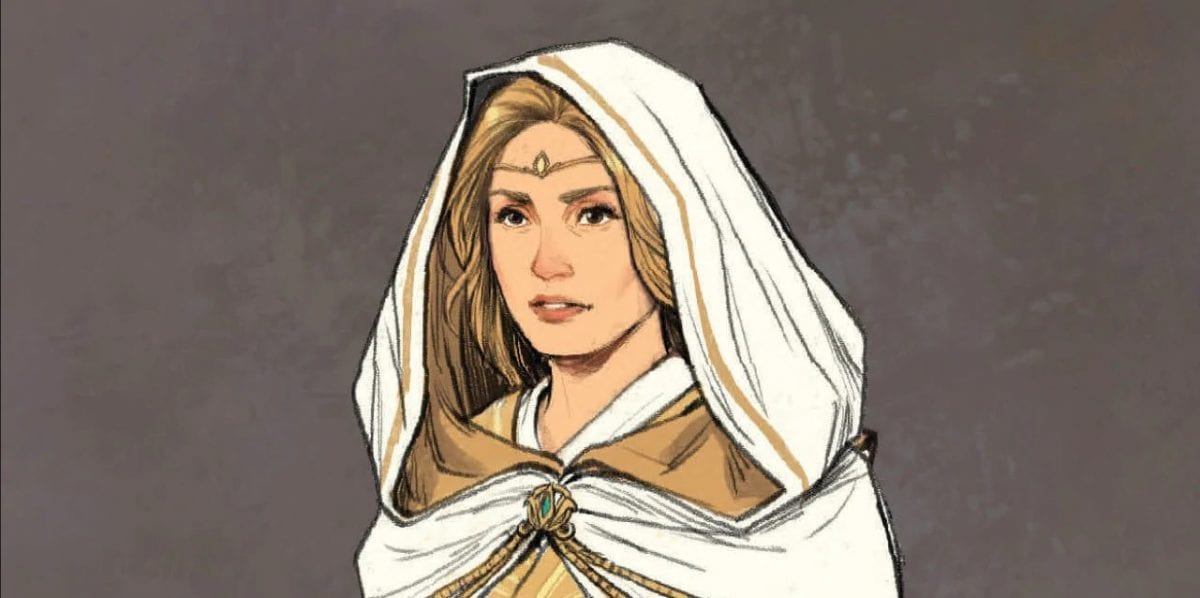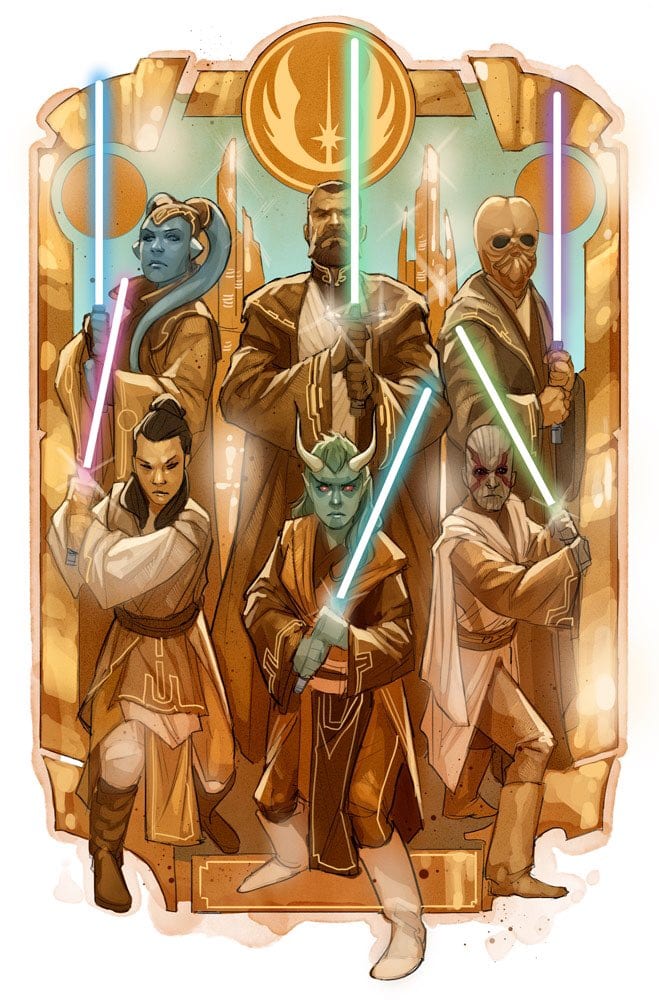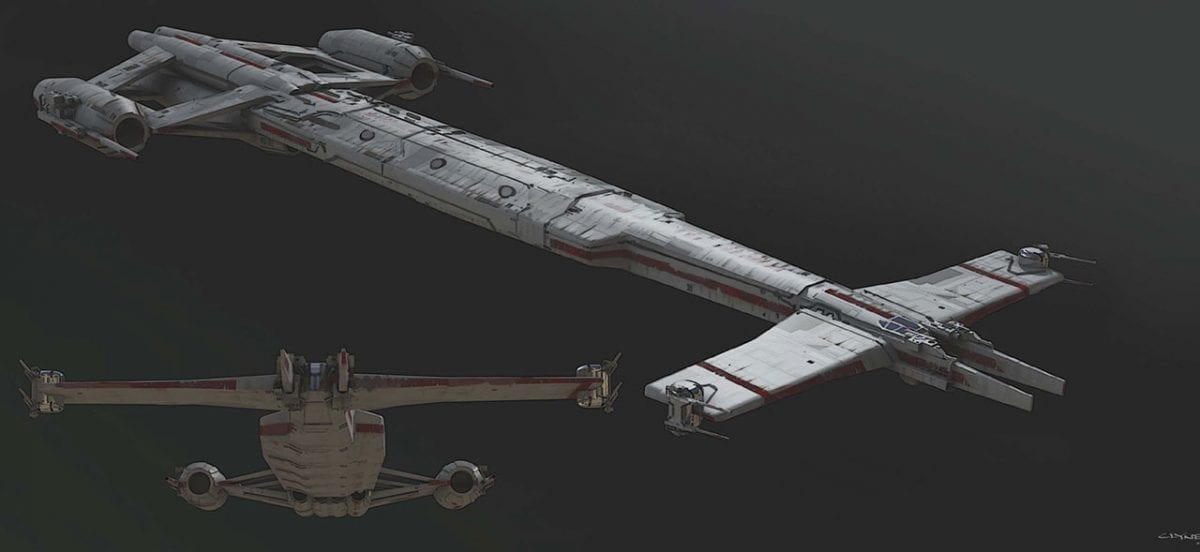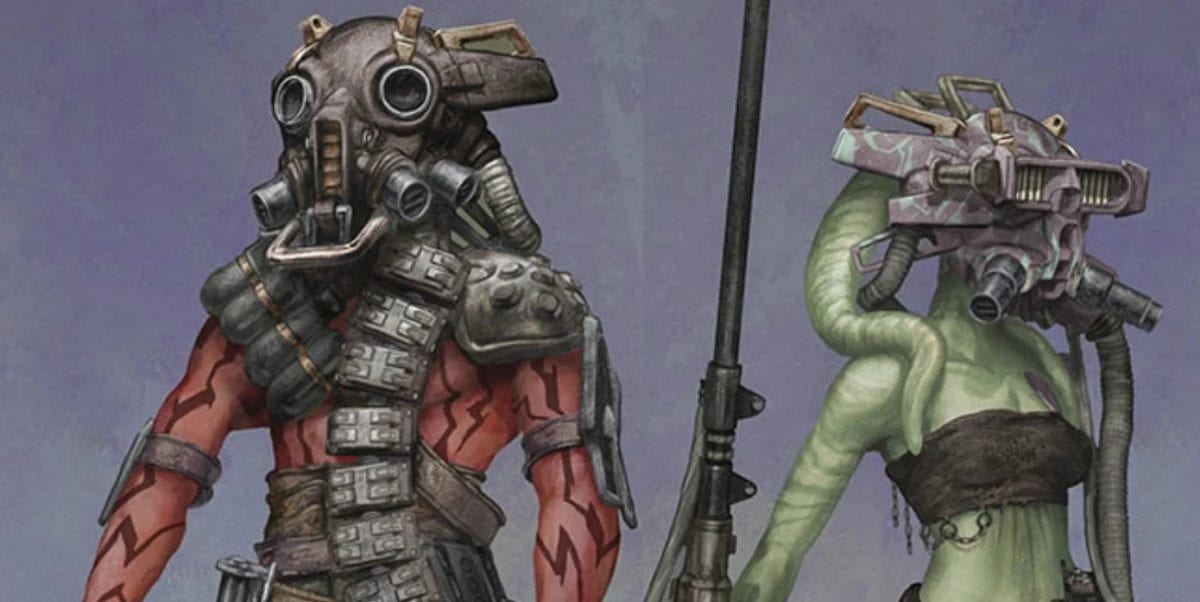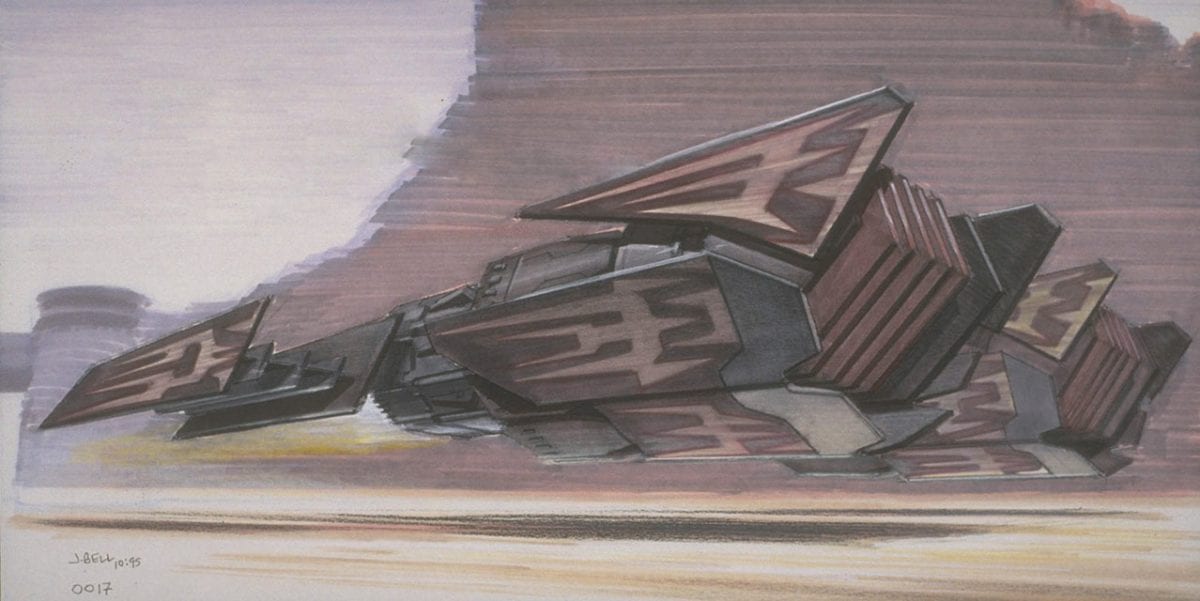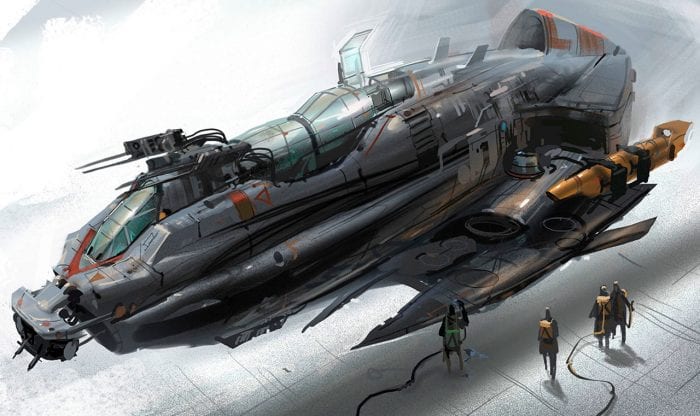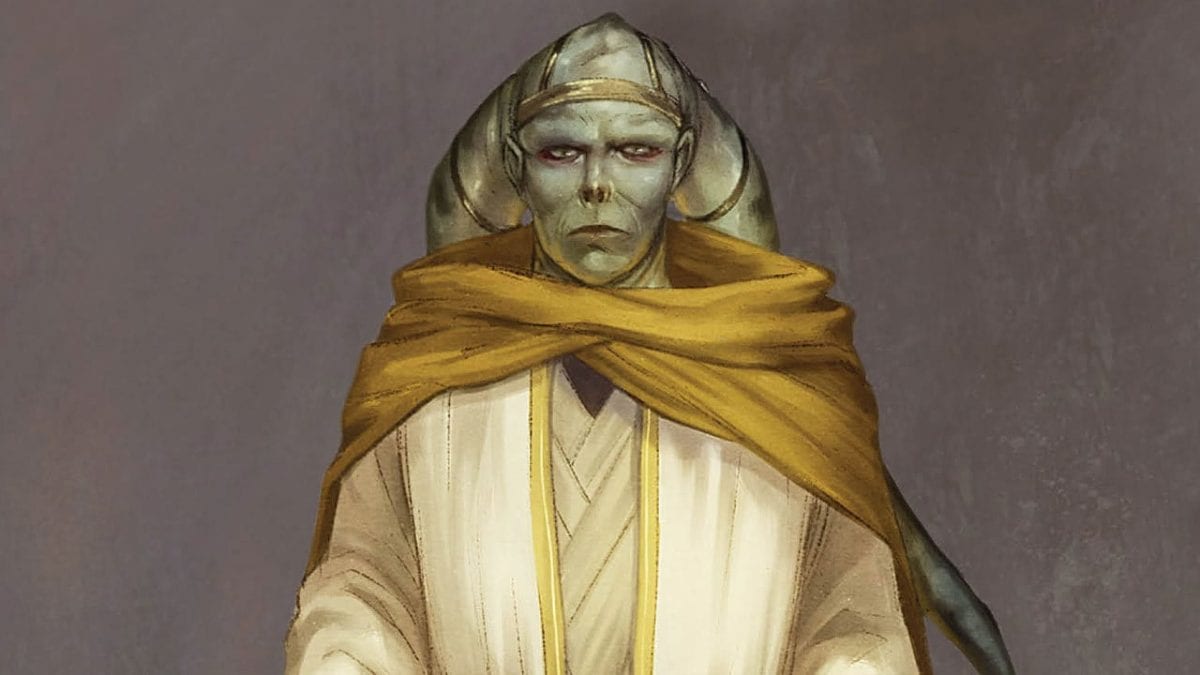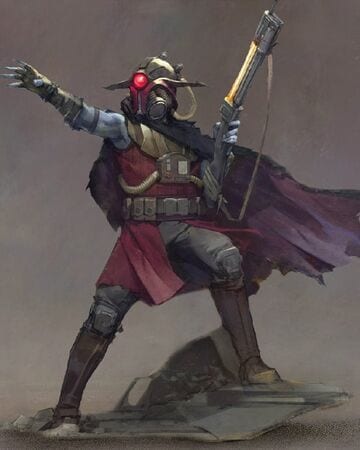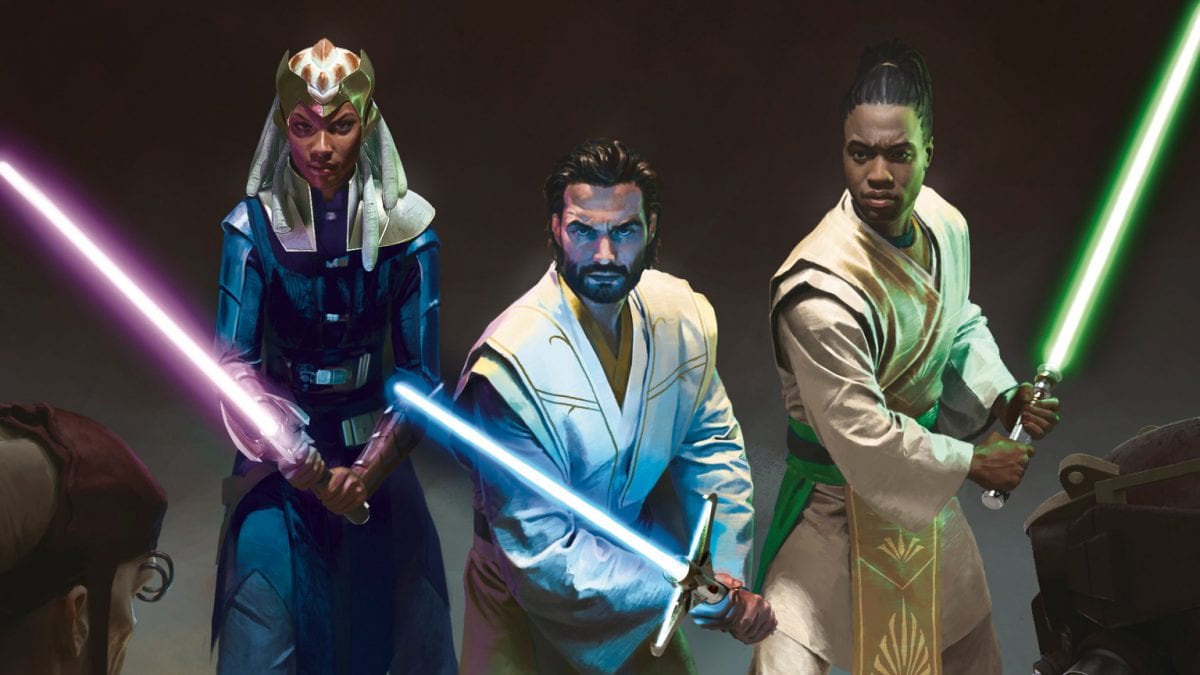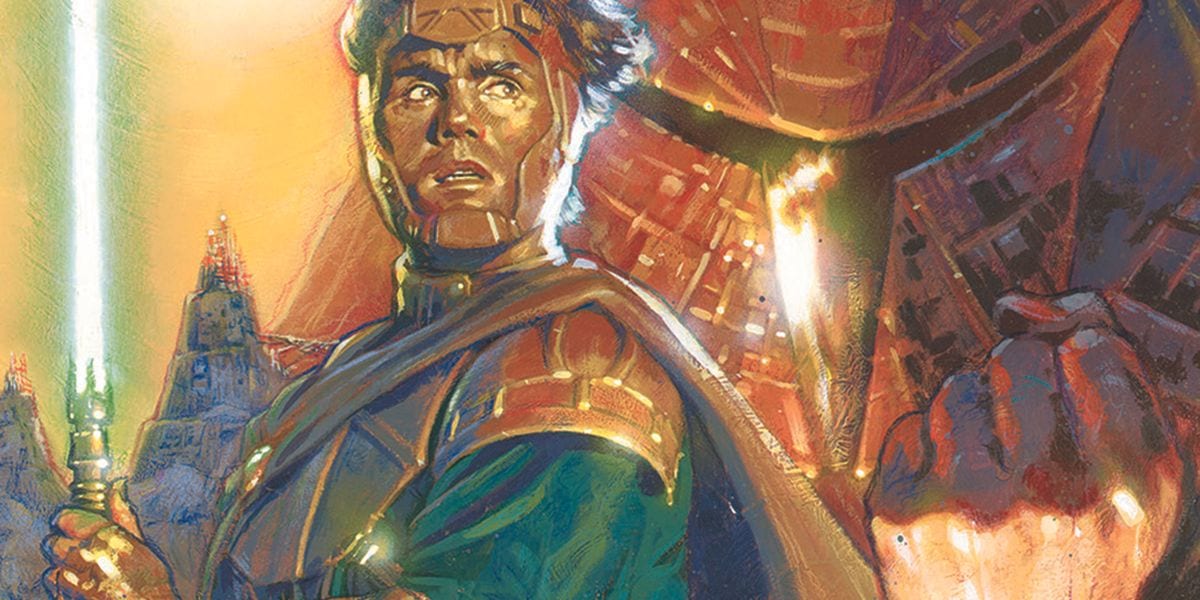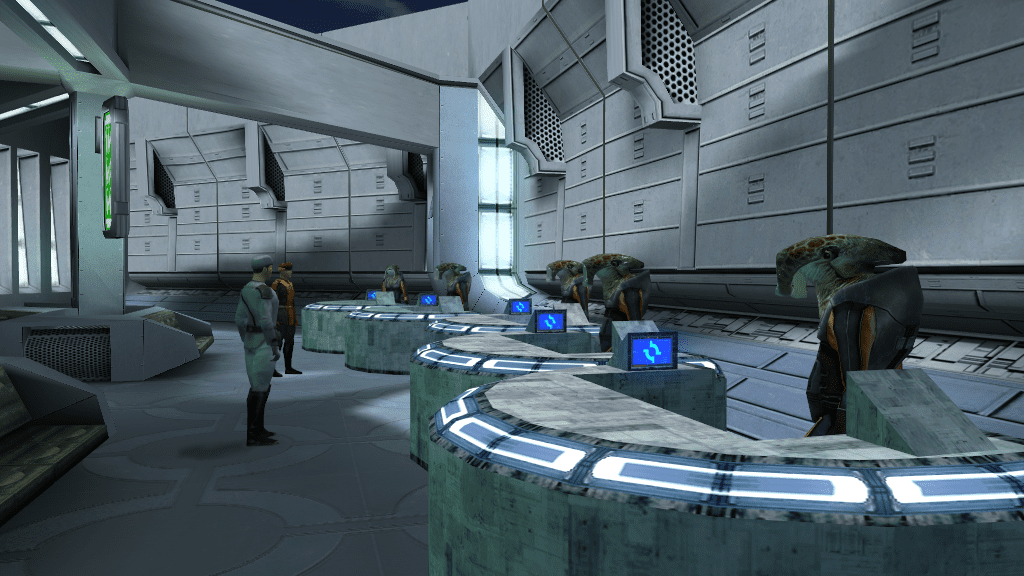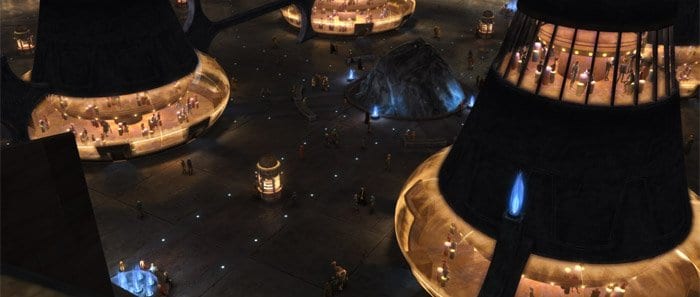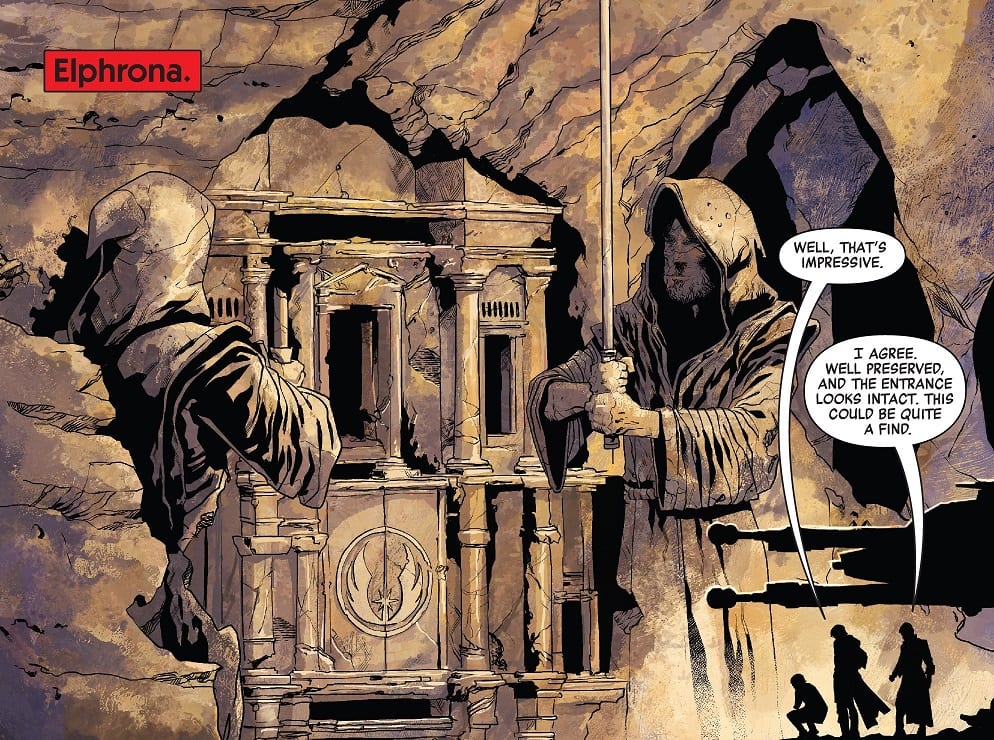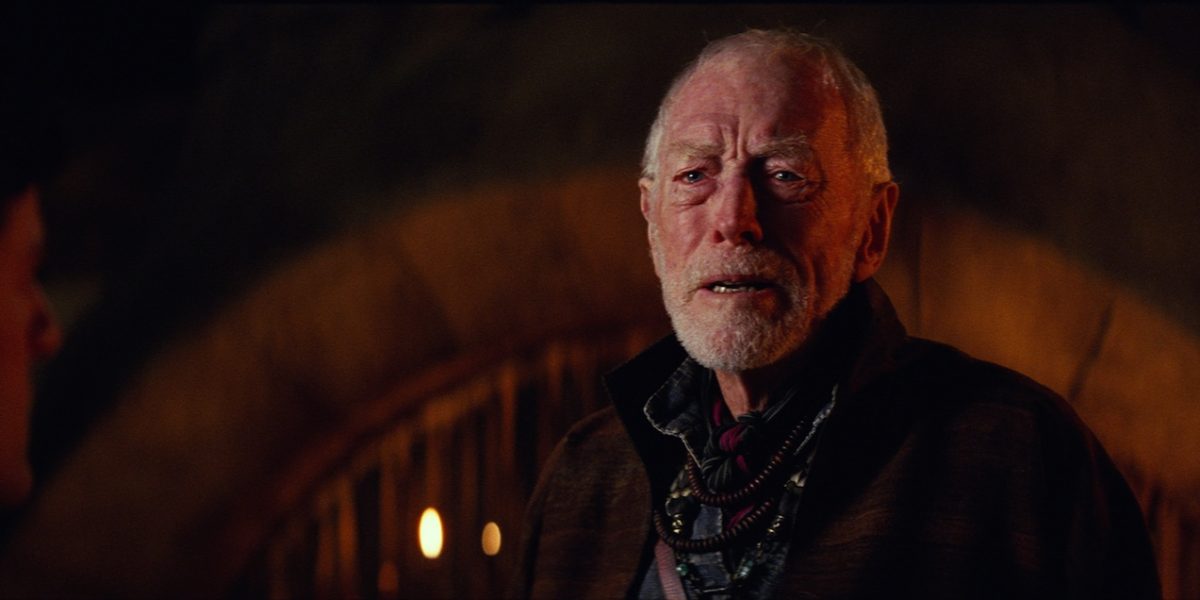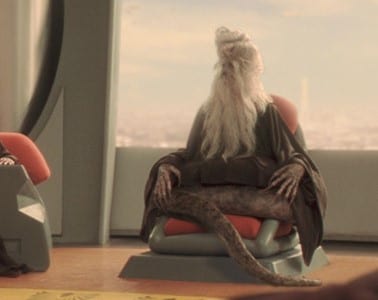We dive deep into The High Republic: Light of the Jedi to breakdown what the initial novel brings to the story, the Easter eggs, and much more!
Star Wars: The High Republic – Light of the Jedi, has kicked off an all new era in the galaxy far, far away. I’ve shared my general thoughts on the overall debut stories, but now the book has launched, I thought it’d be fun to go a bit more in depth on Charles Soule’s novel; what it means, the connections made, and what could be coming next.
This post will NOT shy away from spoilers. So if you haven’t had a chance to read through the new novel, you might want to check out our spoiler-free review first and come back to this later. If you have read it, or just eager for some juicy details, then let’s keep going!
Jedi Roster
The High Republic era is filled to the brim with all new characters and even more Jedi than what we saw during the Prequels. One of my favorite things about Light of the Jedi is how Charles Soule is able to deftly introduce a ridiculous amount of them in just the first handful of chapters of the book. It’s rapid fire, and can feel overwhelming, but done in a way that keeps them all feeling distinct within the story.
Even so, it’s a lot to keep track of and as I jumped into other stories, found myself having to come back and double who’s who. You might feel the same way. Thankfully, the very diligent fans at StarsWarsLibriComics have created this handy guide to keep your Jedi, and connections, straight:
Obviously some things shift around during the stories, and not all of these feature prominently in Light of the Jedi (most don’t actually), but it has definitely come in handy.
A Time of Peace
Before we dive into the specific events of the book itself, I want to talk a little bit about the time period. Taking place 200 years before the events of The Phantom Menace doesn’t feel like enough time to really set things apart, but they’ve done an excellent job making it feel completely different than anything we’ve seen before.
Most notably, we’re diving into the story and approaching these characters from a place of peace. While this seems antithetical for a series with WAR literally in the name, the approach makes for some interesting storytelling.
Obviously, being set in “peacetime” doesn’t mean there’s no conflict. In fact, we’re kicking things off right at the time when the Jedi find themselves up against an enemy they’ve never faced before. There are plenty of smaller conflicts, planetary disputes, and such to deal with, but there’s no galactic-spanning war taking place that can affect everyone’s lives.
In fact, The High Republic is a time of expansion, and the reason is one that intrigues me a great deal. Considering Star Wars deals with hyperspace travel that gets our heroes all over the galaxy, it seems strange that just 200 years prior to the movies, they seemed so limited in how they traveled. Hyperspace is still around, but the lanes are still dangerous, and require prospecting-style pioneering to forge new routes.
It seems like there’s a good reason for that. While nothing is directly spelled out, there are hints and teases about events from the even more distant past. There are mentions of the “Great Sith Wars” and we know from other media that the Mandalorian wars were a thing at some point. Though it doesn’t get specific it sounds like one of the big conflicts ultimately set the galaxy back; a sort of “Dark Ages” they had to recover from. There’s even a mention of how the galaxy was bigger before, and that Chancellor Soh is trying to reclaim what was lost via her “Great Works” and this expansion.
There’s a wealth of story potential in those tidbits. Whether they’re explored more in these stories, or in other mediums, it’s an interesting tidbit that makes this era feel more grounded and make sense in the larger context of the galaxy.
The Great Disaster
Also known as the Great Hyperspace Disaster, this is the major event that not only kicks off the novel, but plays a significant role throughout all of The High Republic stories at launch. It brings in a ridiculous amount of Jedi (more than we’ve seen in action before) to try and avert total disaster and save as many lives as possible.
It’s a powerful introduction to these new Jedi and the era on the whole. More importantly, it sets the stage for a mystery to be solved.
The disaster itself stems from a massive transport vessel, The Legacy Run (heading to the Outer Rim loaded up with expansion bound frontiers people), encountering a problem within Hyperspace. It results in the Legacy Run breaking apart in transit, with various transport pods, and pieces of debris exiting hyperspace at random points to wreak all manner of havoc.
Even after calming things from the initial emergence, pieces of the ship continue to appear. Dealing with chunks of debris moving fast enough to obliterate entire continents/worlds is bad enough, but an even bigger concern is whether or not Hyperspace remains safe to use. If one incident like this can affect multiple worlds and billions of lives, can they risk doing so again and again?
Thus, they must solve the mystery of how the disaster happened. This mystery comprises much of the rest of the book which puts them squarely in the path of the Nihil.
Riding the Storm
The Nihil are the new villains of this era. Though initially thought of as nothing more than simple raiders on the outskirts of the galaxy, it quickly becomes clear they’re a significant threat. Light of the Jedi does a great job fleshing out this new organization, with the story jumping back and forth between their leaders and those of the Republic.
The Nihil have a singular goal in mind: do what they want, whenever they want it. They have no real limits, and thrive on chaos. Somehow, they still have a loose hierarchy they follow (much of which is based around storm terminology) but are essentially guided by the heads of three distinct factions.
Like all triumvirates, they don’t like each other much. In their society of “survival of the fittest” they’re always on guard against one another. This mentality helps keep them in balance, along with a lone figure name Marchion Ro.
Marchion is the ‘Eye of the Nihil’ and despite not being a leader of the organization (initially anyway), serves an important role. The key to the Nihil’s success, and controlling fear in the Outer Rim, is their ability to appear suddenly anywhere and everywhere. And THAT ability is thanks to Marchion and his father before him.
They are stewards of “the paths” which allow the Nihil to traverse hyperspace in unique ways. While everyone else must do so along carefully charted courses, they’re able to do things otherwise thought impossible. Marchion provides these paths to the leaders of the Nihil, and in exchange, he gets a cut of all their plunder. The Eye of the Nihil, however, isn’t content to simply play a background role for the marauders and has other ideas in mind.
Marchion’s Plan
While Marchion doles out the paths, he isn’t the one who discovers them. Secreted aboard his flagship is Mari San Tekka who’s been kept alive well beyond when her lifespan should have ended. Using a special medical housing pod designed to keep her alive for as long as possible.
Somehow, she’s able to traverse hyperspace almost like others pilot through regular space. It’s a skill that allows her to find new, safe, ways to-and-from virtually anywhere. To me, the description of her abilities felt almost exactly like what we’ve seen from the Chiss ‘Sky-walkers’ who use the Force to travel hyperspace.
It’s an interesting connection and something I suspect will come into play further down the road. Perhaps it has something to do with the Republic developing further along to the hyperspace travel we see them using a couple hundred years later.
Either way, Marchion, like his father before him, is using Mari to build an archive of ‘paths’ he can use towards his real goal: revenge. Though this doesn’t become fully revealed until near the end of the novel, it’s clear that Marchion is pulling the strings from the behind the scenes for a while. Ultimately, he ends up putting himself in a position to lead the Nihil completely and totally.
He also manages to capture the great Jedi Master, Loden Greatstorm. It’s here, near the very end of the novel, we learn that Marchion (which isn’t his real name) has a history with the Jedi and hates them a great deal:
“His family had trusted the Jedi once, and it cost them everything.”
Sadly, we don’t get any answers on what that connection is (we’ve got a lot more books on the horizon to explore that), but it’s clear Marchion isn’t merely out to make the Nihil richer. He wants to end the Jedi Order completely. He’s using Mari to that end, and it’s revealed they were the cause of the Great Disaster to begin with. From the start of the book to the end, we’re seeing Marchion’s plans in action….
Strange Tool
Probably the biggest mystery left dangling in Light of the Jedi is one of the tools Marchion has in his possession. It’s a rod that fits in his hand and glows purplish when he holds it. It’s also carved with strange symbols, fire, and screaming faces…you know, just wholesome stuff.
There’s no telling what exactly it is, or how it’s used, but it has something to do with how he came into contact with the Jedi in his past, and he believes it is a key to handling the Jedi.
The device also seems to have some connection to the terrifying vision Elzar Mann (who works with Avar Kriss throughout the novel) has in the epilogue. He sees Jedi mutilated and killed while fighting against “awful things that lived in the dark. Things that lived in the deep.”
It sounds pretty bad and sets the stage for a bigger threat for The High Republic on the whole. Notably, however, this vision is tinged in a sickly purple color, kind like how the rod glows purple. Sure, perhaps purple is the standard for how Elzar Mann sees his visions and I’m just reaching here, but I think the connection is more than coincidental. Whatever this tool is that Marchion has, it has the power to do some serious damage against the Jedi. Maybe it’s an old Sith artifact his family came across. No telling at this point, but I’m damn excited to learn more about it (hopefully soon).
What the Future Holds
This is a tough one, especially in light of the recent slate of announcements. With a plan of three distinct phases, with the first planned to go into 2022, there’s a multi-year story in play. That makes it a bit difficult to try and discern where the story might go next.
From the sounds of it, however, it looks like the Jedi are about to come up against the biggest threat they’ve ever faced. The consequences of which will ultimately set them on the path leading to their downfall in the Prequel era.
I suspect we’ll learn much more about the Nihil and their mysterious new leader. Despite the period of time (and what’s been said) I suspect we’ll also get something involving the Sith who are out and about. We know they’ve kept themselves in hiding during this period of time (sticking to their Rule of Two), and there’s little chance they don’t have SOME behind the scenes plans in play.
Easter Eggs/Connections
Even though it takes place a couple hundred years in the past, as with every Star Wars story, Light of the Jedi has a number of fun Easter Eggs and connections for long-time fans to enjoy. Here, I’ll share a few of the major ones I noticed:
Ancient History – Definitely my favorite quick mentions in Light of the Jedi are the references to an even more ancient past. We get a direct mention (by Oppo Rancisis no less) of the “Great Sith War” which was originally named in the 90s Tales of the Jedi comics. There’s also mention of when the Order was down to just a handful of members (which we’ve seen in KOTOR II).
Battle Meditation – Though it’s not explicitly said, Avar Kriss’ unique skill in the Force (being able to unite with the minds of all the Jedi around and guide/direct the flow of things) is described and used exactly like the Battle Meditation skill original mentioned in the Knights of the Old Republic. Bastila Shan was famous for using the technique to help stop Darth Revan’s conquest, and it’s a skill that pops up in just about every story from that period of time in Legends. Cool to see that idea still around.
Selkath/Kolto – Speaking of KOTOR, the Selkath get a mention (though they’ve already popped up in canon) that feels like a direct reference to their role in the classic game. In Light of the Jedi, the Selkath are briefly mentioned as potential suspects behind the Great Disaster, due to the fact that it nearly destroyed Hetzal. Hetzal is strongly implied to be the origin of the healing substance Bacta, which is set to revolutionize medical care and recovery.
It’s mentioned that the Selkath could be involved since the Bacta would be a direct competitor to their own medicinal industry. In KOTOR, the Selkath are in control of the planet Manaan, which is where Kolto (the healing substance of THAT time) is harvested. While it’s not outright said, the implication is a clear reference to their history which originated in KOTOR.
Manarai Range/Umate – the mountain range that was initially named in Timothy Zahn’s Heir to the Empire (and popped up frequently throughout Legends) gets a mention in Light of the Jedi. The tallest peak is the centerpiece of Monument Plaza where the tallest peak can still be seen. Though it has been seen in the background of a couple Clone Wars episodes, Light of the Jedi brings its name, Umate, back from Legends and into the Canon.
Bastion – This is, personally, one of my favorite Easter eggs. It’s a quick, blink-and-you-miss-it mention, but the planet Bastion gets a name drop as an Outer Rim world. In the Legends material, Bastion was the location of the Imperial Remnant who brokered peace with the Republic and generally just remained in that part of the galaxy. Always fun to see these planets make the jump into the new material.
Elphrona – This is more connection than Easter Egg since the planet plays a major role in the book. The Jedi outpost on Elphrona actually FIRST appeared in the Rise of Kylo Ren comic mini-series. It’s where Luke and (then apprentice) Ben Solo initially came in contact with the Knights of Ren!
Naboo – Marlow and Vellis San Tekka are residents on Naboo. On top of that, there’s a mention of Omar Berenko, a poet/artist who lived in the Naboo’s Varykino lakehouse…The lakehouse where Padme and her family live during the Prequels. Berenko’s existence dates back to Legends material from Attack of The Clones, so Light of the Jedi is making it clear he lived during this era.
San Tekka – Speaking of the San Tekka’s…That’s a name fans should be familiar with. Lor San Tekka is the character played by Max Von Sydow in The Force Awakens. He’s the one at the start who gives Poe the map to Luke, and confronts Kylo Ren. It’s clear they have a history together (one we see briefly in The Rise of Kylo Ren comic), and now we get to see how his descendants were influencers back in the day.
We’ve already talked about Mari San Tekka, and her involvement with Marchion, but the book also features Marlowe and Vellis San Tekka. The pair live on Naboo and their family made a fortune by being hyperspace prospectors. They found/find the safest routes through hyperspace and have a vested interest in the technology behind it. I think they’ll have more roles to play down the road.
Familiar Jedi – While we’ve known for a while now that Yoda would be a familiar face connecting this time period to the Star Wars films we know, turns out there are a couple other long-lived Jedi who get appearances in this first novel: Yarael Poof and Oppo Rancisis. Sadly Yaddle isn’t mentioned, but I have a feeling she’ll pop up at some point.
I’m sure there are a lot more Easter eggs I have missed, or forgot to mention, but these are the ones that stood out to me the most.
If it hasn’t become clear, I am absolutely in LOVE with The High Republic and Light of the Jedi. It’s such an excellent kick-off to this new era and teases some incredible potential to come.

